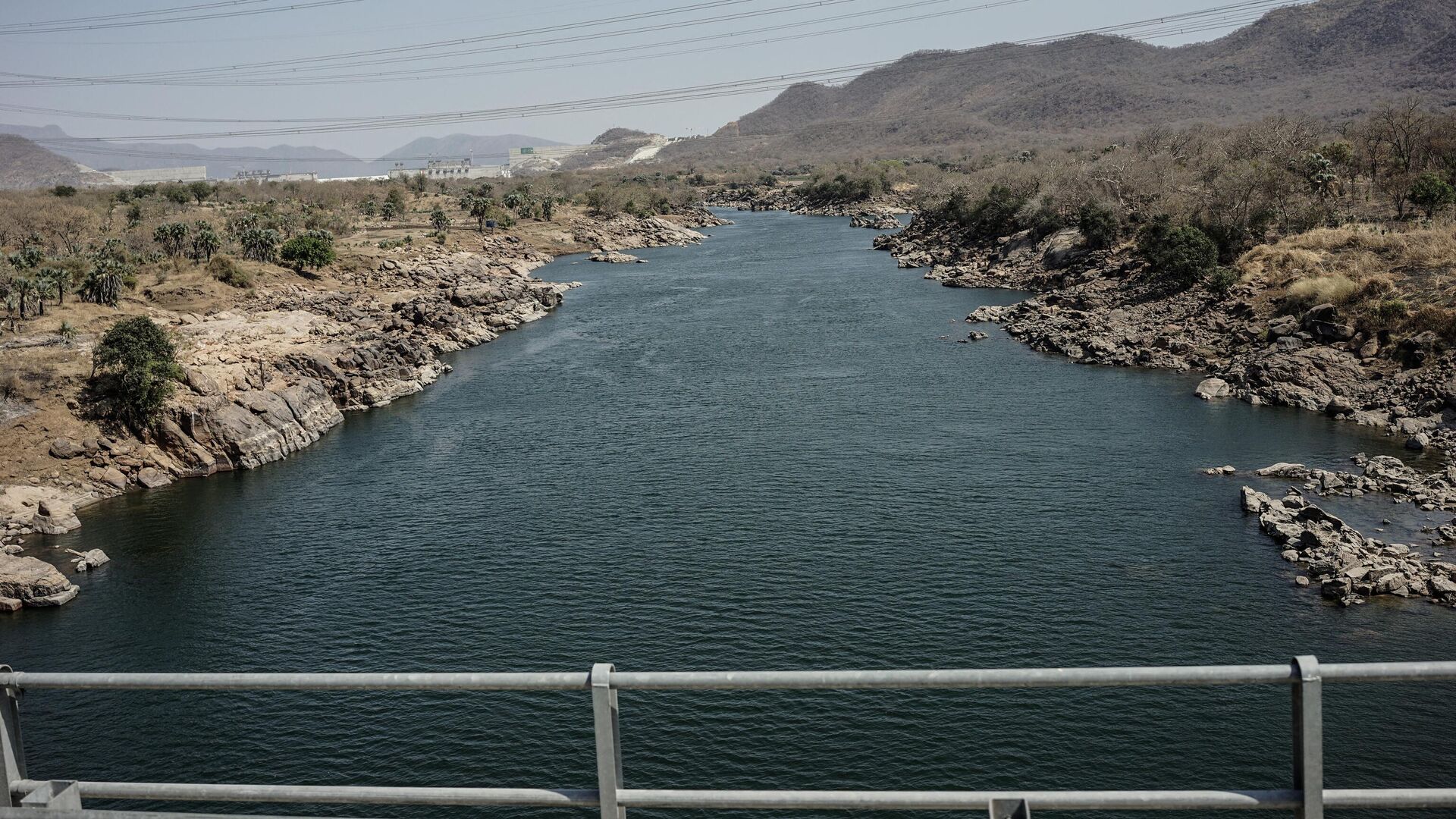https://en.sputniknews.africa/20230910/ethiopia-completes-filling-africas-largest-dam-1062006514.html
Ethiopia Completes Filling Africa's Largest Dam
Ethiopia Completes Filling Africa's Largest Dam
Sputnik Africa
In 2012, Ethiopia started the construction of the Grand Ethiopian Renaissance Dam, which is a gravity dam located on the Blue Nile River. The project's main... 10.09.2023, Sputnik Africa
2023-09-10T15:25+0200
2023-09-10T15:25+0200
2023-09-10T15:25+0200
abiy ahmed
ethiopia
egypt
sudan
international
north africa
cairo
hydropower plant
economic growth
https://cdn1.img.sputniknews.africa/img/07e7/09/0a/1062007049_0:320:3072:2048_1920x0_80_0_0_f48e5a81366b0ba6d57a7c279ea27fd0.jpg
Prime Minister Abiy Ahmed announced Sunday that Ethiopia has completed the filling of its Grand Renaissance Dam on the Nile, a source of regional tensions with downstream Egypt and Sudan."There was a lot of challenge, we were many times dragged to go backwards. We had an internal challenge and external pressure. We've reached (this stage) by coping together with God," he said.Considered vital by Addis Ababa, the massive $4.2-billion dam has been at the centre of a regional dispute ever since Ethiopia broke ground on the project in 2011, with Egypt fearing it will slash its share of Nile water.The current talks, which resumed after nearly two and a half years, aim to reach an agreement that "takes into account the interests and concerns of the three countries," Egyptian irrigation minister Hani Sewilam said, urging "an end to unilateral measures".A few weeks earlier, in mid-July, Egyptian President Abdel Fattah al-Sissi and Abiy Ahmed had given themselves four months to reach an agreement on the filling and operating of the dam, during a meeting on the sidelines of a summit of African leaders on the war raging in Sudan.Egypt considers this megadam an existential threat because the country depends on the Nile for 97% of its water needs. Khartoum's position has varied in recent years.After several months of common front with Egypt in 2022, the Sudanese leader, General Abdel Fattah al-Burhane, said last January that he "agreed on all points" with Abiy Ahmed regarding the dam.
https://en.sputniknews.africa/20230828/egypt-sudan-ethiopia-resume-talks-on-renaissance-dam-ministry-says-1061678847.html
ethiopia
egypt
sudan
north africa
cairo
Sputnik Africa
feedback@sputniknews.com
+74956456601
MIA „Rossiya Segodnya“
2023
Agence France Presse (AFP)
Agence France Presse (AFP)
News
en_EN
Sputnik Africa
feedback@sputniknews.com
+74956456601
MIA „Rossiya Segodnya“
Sputnik Africa
feedback@sputniknews.com
+74956456601
MIA „Rossiya Segodnya“
Agence France Presse (AFP)
abiy ahmed, ethiopia, egypt, sudan, international, north africa, cairo, hydropower plant, economic growth
abiy ahmed, ethiopia, egypt, sudan, international, north africa, cairo, hydropower plant, economic growth
Ethiopia Completes Filling Africa's Largest Dam
Agence France Presse (AFP)
Samantha Arias
Producer / Podcast host
In 2012, Ethiopia started the construction of the Grand Ethiopian Renaissance Dam, which is a gravity dam located on the Blue Nile River. The project's main purpose is to generate electricity to alleviate Ethiopia's acute energy deficit and export it to surrounding countries.
Prime Minister Abiy Ahmed announced Sunday that Ethiopia has completed the filling of its Grand Renaissance Dam on the Nile, a source of regional tensions with downstream Egypt and Sudan.
"It is with great pleasure that I announce the successful completion of the fourth and final filling of the Renaissance Dam," Abiy said in a message on X, formerly Twitter, which comes as negotiation between the three countries resumed August 27.
"There was a lot of challenge, we were many times dragged to go backwards. We had an internal challenge and external pressure. We've reached (this stage) by coping together with God," he said.
"I believe that we will finish what we have planned next," he said.
Considered vital by Addis Ababa, the massive $4.2-billion dam has been at the centre of a regional dispute ever since Ethiopia broke ground on the project in 2011, with Egypt fearing it will slash its share of Nile water.
The current talks, which resumed after nearly two and a half years, aim to reach an agreement that "takes into account the interests and concerns of the three countries,"
Egyptian irrigation minister Hani Sewilam said, urging "an end to unilateral measures".
A few weeks earlier, in mid-July, Egyptian President Abdel Fattah al-Sissi and Abiy Ahmed had given themselves four months to reach an agreement on the filling and operating of the dam, during a meeting on the sidelines of a summit of African leaders on the war raging in Sudan.
Egypt considers this megadam an existential threat because the country depends on the
Nile for 97% of its water needs. Khartoum's position has varied in recent years.
After several months of common front with Egypt in 2022, the
Sudanese leader, General Abdel Fattah al-Burhane, said last January that he "agreed on all points" with Abiy Ahmed regarding the dam.



